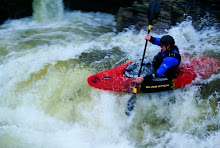- less gel coat
- Vac bag construction
- EST logo
- Kevlar changed to carbon kevlar for better drapability and single piece construction
- less resin used as a result
First I stopped being so lazy and polished up the mould a bit more:
After this I made the vac bag I would be using with plenty of material so it can get right down into the inside of the helmet. I have stolen a 1600W vacuum cleaner and stuck a port in it to create my vacuum.

The EST logo has been created from polyethylene which is easy to create but doesn't fold well into the mould so hasn't given a perfect imprint. It has been suggected that I use sheet wax next time which can be heated to mould into the shape of the helmet, something for the third prototype.
 I layered up the carbon when the gel coat was touch dry so that the weave could be manipulated without being damaged too much( It's still not perfect). All the other layers went in fine in single peice sections which was great. I'm trying a new release film which is cheaper than peelply but apparently does the same job (I hope). After this the polyester fleece is put on and the whole lot put into the vaccum bag.
I layered up the carbon when the gel coat was touch dry so that the weave could be manipulated without being damaged too much( It's still not perfect). All the other layers went in fine in single peice sections which was great. I'm trying a new release film which is cheaper than peelply but apparently does the same job (I hope). After this the polyester fleece is put on and the whole lot put into the vaccum bag.
It impressive how much a standard vacuum cleaner can do. Mould will come off on Wednesday night and I should hopefully have something to show for slalom so I'll see people there.

